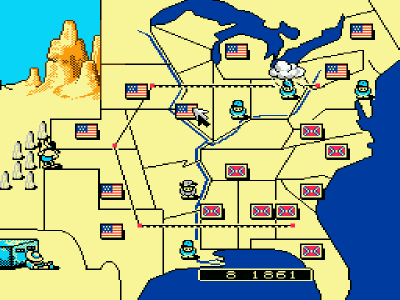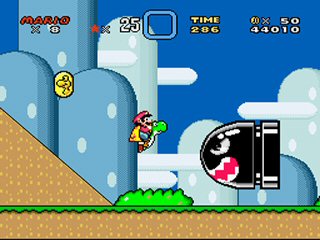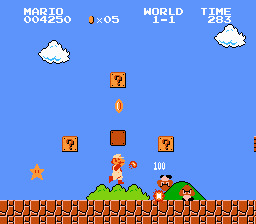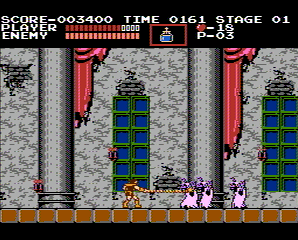
Franchise-milking giants Atari and Namco Bandai have teamed up once again to churn out another Dragon Ball Z game. This time it's a sequel to last year's Raging Blast, a game that, like the first entries in the Budokai and Tenkaichi series, was incredibly flawed. The difference that sets Raging Blast apart from its last generation cousins, however, is that it did not seek to explore new ground, it sought to refine the Tenkaichi series' gameplay and bring it into the current generation of games, much like Burst Limit attempted to do with the Budokai series (to much disappoint and failure).
Raging Blast 2 is a strange bird. It is ambitious, but also cautious about what it brings to the table. Like with many of developer Spike's previous outings with Dragon Ball Z, Raging Blast 2 is for the most part an enhanced version of last year's game. Little is changed beyond purely aesthetic design choices: The graphics have been overhauled and there is a noticeable effort made to provide the player with a sense of scope in their battles. The fighting mechanics are virtually the same as last year, with three small changes: A new, mostly pointless "Raging Soul" attack that disables special attacks in favor of buffed melee attacks, a considerably more forgiving timing window for dodging attacks, and a tweak to the combo system that causes most combos to chain into one another without much player imput. There was only one song that played during battles in the demo, but even it was a couple notches better than any of the boring rock songs in Raging Blast 1.

Now, problems. Veterans of Raging Blast will notice I made no comment on the camera being improved, this is because it hasn't been improved, merely given more options for framing the fighting. I noticed quickly that Raging Blast 2's camera tends to fixate on and slow the game down to emphasize the drama of almost any melee attack. On a purely presentational level, this is pretty cool, but in gameplay it becomes tiresome, and worse, disorienting. "Disorienting" is the word I would choose to best describe Raging Blast 1's camera, with its homing in on walls and character's butts at the most inopportune times. Raging Blast 2's camera still has this problem, but usually evades it by rapidly switching to a different angle each time an attack combo is completed. This causes issues with depth perception, as the camera is constantly framing the action differently, which leads to confusion as to how close you are to your opponent. Rather than fixate on a wall, leaving the player with a crippling blindspot, RB2's camera jarrs you around and makes it difficult to focus on doing much playing at all.
The camera's problem ties into the way scope is achieved in RB2 as well. As in last year's game, RB2's camera is at its worst when forced to deal with multiple walls in the environments. These are not the barriers of the stages, but setpieces that can usually be interacted with during fights. Although there were only two arenas available in the demo, I get the impression that Spike's solution to the wall problem was to remove most of them, or at least create large, flat areas to start the players in and, hopefully, finish their fight within. This strategy comes with the consequence of lessening the impact of the game's scale: One stage involves fighting on a glacier and I noticed a cool looking ice bridge that formed caves just behind where my character started. My first instinct was to try and draw the fight underneath the bridge and maybe try to destroy the structure or at least fight in the natural caves. Once the fight began, however, I quickly discovered that the invisible boundaries of the stage lay just before this awesome looking structure. Why include it so close to the starting position if it can't be interacted with? It's not like it was part of the background, no, this ice bridge was RIGHT THERE. As for the rest of the glacier level, it was mostly just a flat arena, yawn.*
*Correction, a flat arena with a few TINY glaciers, a couple small houses, and ONE spire-like glacier of decent size. I forgot to mention that there was also a GIANT pirate ship in the level, and although it starts much farther from you than the ice bridge and caves, I still tried to reach it. You can't interact with it, of course.

One final thing that really needs to be addressed is how the combination of the camera and the new dramatic, literally show-stopping camera angles screw with the timing of the actual combat. Having come out of playing Raging Blast 1 some two weeks ago, I was familiar with the basic combos and controls immediately in Raging Blast 2. What I wasn't prepared for was the strange disconnection I felt from my character. I think that it's critical for a fighting game to aim for as close to a 1:1 ratio between player input and character action on screen. It is this quality that is shared by the best fighting games out there that gives them their characteristic tactile experience. No genre, excluding Music/Rhythm, comes close to emphasizing the importance of specific inputs and responsive controls than the Fighting genre. Raging Blast 2 has an issue with responsiveness, and it comes from Spike's efforts to make the game feel as cinematic, exhilerating, and close to the source anime as possible. The dramatic slowdown that occurs with completing combos, in combination with the constantly shifting camera angles that come with completing said combos, really begins to throw off the timing of your combos. I'm not talking about fancy chains of combos either, maybe just putting together a couple at most.
Raging Blast 1 had the same issue, but in a different way, the annoying camera could cause you to carry a combo into a blindspot and you would literally punch past your opponent and leave your back exposed to them. The same thing occurs here but it is because of the constant bombardment of new camera angles, coupled with the "dramatic slowdown" and the tweaked fighting system that tries to chain together combos for you that makes Raging Blast 2 feel at best somewhat clunky, and at worst entirely unresponsive. I can not emphasize enough how dissatisfying it is to feel like the game either barely listens to my inputs or plays itself for me, and it all comes down to the weird timing system this game has. Sometimes it feels like I reacted too soon and the game was caught between animations and couldn't carry out my command, and other times it seems like the ratio between controller input and character action on screen was just a half second delayed.
I should make it clear now that I did not think that Raging Blast 1 ever felt "delayed" between controller inputs and the action on screen. I didn't feel it was as tight of a game as, say, Budokai 3, or even Tenkaichi 3, but it wasn't an issue while playing. Here, in Raging Blast 2, it's an issue. A big issue that joins a host of other problems. In Spike's usual effort to simulate the Dragon Ball Z anime, they've run into the obstacle of Presentation vs. Playability. Budokai 3 was largely a straight 2D Fighter with DBZ characters and energy beams included, but what it sacrificed in presentation it made up for in tight, responsive, and strong gameplay. Raging Blast 2 is the closest thing to a simulated DBZ episode available (or at least soon to be available) but sacrifices practicality and accessibility to achieve it.
Ultimate disclaimer, of course: This is just the demo and my impressions, but since this is clearly not the demo shown at E3 or the Tokyo Game Show, I feel safe in saying that this is a strong representation of the final product.
Play the demo, decide for yourself, but don't run out and buy it blindly.
- VengefulMetroid






















Log in to comment